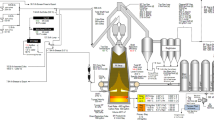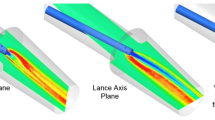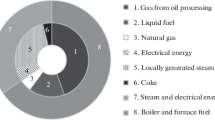Summary
Fuel injection into the blast furnace as a substitute for expensive coke has become an accepted asset in the art of ironmaking. In a short span of seven years, fuel injection has been expanded to 50% of the furnaces in the United States and Canada and the types of fuels now include gas, fuel oils, tar, coal, and slurries on a trial basis. This technological innovation brought about the emphasis on hot blast temperature operations which in turn led to numerous other developments in the ironmaking industry. Fuel injection is necessary because more iron is being produced, therefore, more fuel is required. It is possible to replace as much as 20% or more of the coke with fuel injection, but to do this it is extremely important that the injection system is soundly designed to give reliable performance.
Large modern blast furnaces produce as much as 135 tph of iron, therefore, the fuel injection system cannot be a source of delays on the furnace. Since the beginning of fuel injection into the blast furnace, engineers have changed and redesigned the injection systems for the various fuels to simplify the original sophisticated and complex systems.
Although there are many varieties of systems still in existence today, the latest systems to be installed follow the general pattern of simplicity with an eye toward minimum maintenance and the elimination of costly furnace delays. Preventative maintenance programs and the use of expendable materials and labor-saving devices all affect the successful minimizing of delays and effective use of fuel injection.
Similar content being viewed by others
References
William H. Collison: Natural Gas Injection at Great Lakes Steel Corp., AISE, Sept. 26, 1961, Pittsburgh, Pa.
W. R. Rombough: AIME Ironmaking Proceedings, 1961, pp. 573–578.
J. P. Walsh: Fuel Injection Blast Furnaces—Sharon Steel Corp., paper presented at AISI Regional Meeting, Chicago, Ill., September 1964.
Fuel Oil Injection at The Hanna Furnace Corp., private communication.
W. P. Dowhaniuk and G. S. Lucenti: Coal Tar Injection Equipment and Experience on Algoma’s No. 3 Blast Furnace, Eastern States Blast Furnace and Coke Oven Association Meeting, February 1965.
G. Holmes, J. I. McNeils, and J. G. Pittenger: Tar Injection “A” Blast Furnace—Ford Motor Co.
J. H. Strassburger, E. J. Ostrowski, and J. R. Dietz: AIME Ironmaking Proceedings, 1962, pp. 157–179.
E. M. Summers: AIME Ironmaking Proceedings, 1964, pp. 69–95.
E. J. Ostrowski and J. R. Dietz: Use of Coal as Injected Blast Furnace Fuel at Weirton Steel Div., National Steel Corp., paper presented at AISI Regional Meeting, Pittsburgh, Pa., November 1965.
J. L. Pugh and R. W. Adams: Journal of Metals, August 1964, pp. 637–643.
Author information
Authors and Affiliations
Rights and permissions
About this article
Cite this article
Ostrowski, E.J. Design and Maintenance Consideration for Blast Furnace Fuel Injection Systems. JOM 18, 1332–1336 (1966). https://doi.org/10.1007/BF03378523
Published:
Issue Date:
DOI: https://doi.org/10.1007/BF03378523




